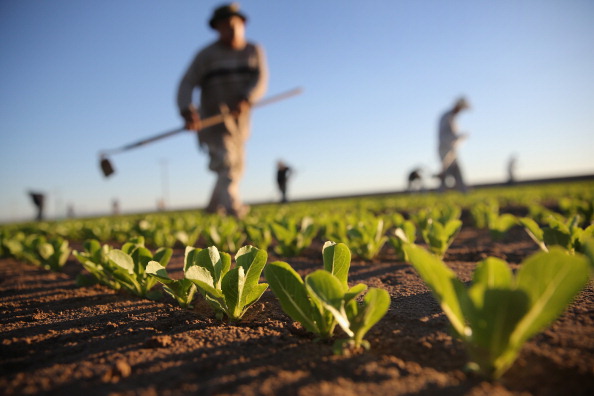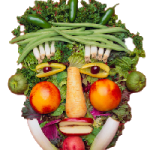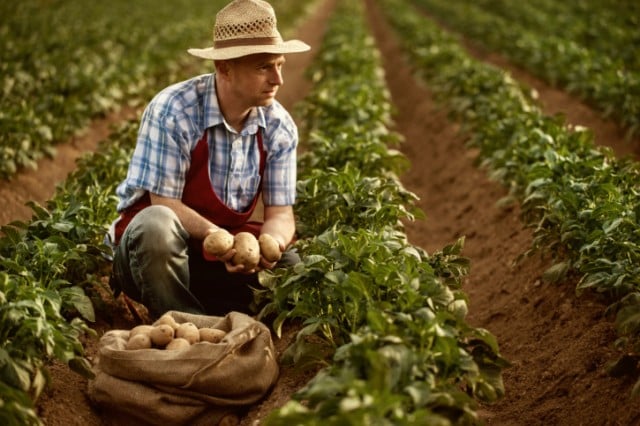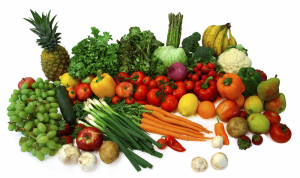Organic Agriculture Can Feed the World’s Hungry

The verdict is in: According to projections released this past fall, the world’s population is expected to hit more than 9.5 billion in 2050, and continue climbing up to 11 billion or more by 2100, if the current trend continues. But as research on world population growth and climate change moves forward, farmers, economists, and policymakers are still struggling to address a major concern: How will the Earth feed all these people? Further, can we do so without destroying the remainder of the planet’s resources?
As it turns out, happily, the planet already produces enough food to feed everyone, but the problem of unequal distribution and poverty remains, leading to two of the leading causes of illness across the world: Chronic hunger and obesity.
Scientists and experts of all sorts have weighed in with potential solutions to the ongoing problem of feeding a growing population and ending world hunger. Up until recently, most of these solutions have focused on utilizing conventional agricultural technology to produce more food. Solutions have ranged from embracing genetically modified organisms (GMOs) to indoor farming, among other, technology-based fixes. On the flip side, small farmers and organic agricultural methods have hardly been researched, or even considered, because, as previous experts have noted, these farms simply cannot compare to their conventional counterparts when it comes to production. Or can they?
According to recent research conducted by scientists at the University of California Berkeley, small farmers could play an important role in saving world hunger, after all. The study, published in the Proceedings of the Royal Society earlier last month found that when organic farmers utilized certain diversification methods, the yield gap between organic and conventional producers essentially vanished, proving what organic food devotees the world over already suspected — that organic food can help to feed the world. The UC Berkeley study “found relatively small, and potentially overestimated, differences in yield between organic and conventional agriculture, despite historically low rates of investment in organic cropping systems.”
One of the most important merits of organic agriculture on a global scale is that, unlike conventional methods, organic agriculture doesn’t rely on synthetic chemical inputs, and is therefore much easier on the environment than conventional farms. Since agriculture is one of the largest contributors to climate change, the idea that organic agriculture could compete with its conventional counterparts is monumental.
The report notes that while our current, conventional agricultural system is “tremendously productive,” it also “causes many environmental problems, often trading off long- maintenance of ecosystem services for short-term agricultural production.”
The UN Food & Agricultural Organisation (FAO) also points out that while experts may have a tendency to ignore the small farmer’s contributions, “the world’s smallholders produce 70 percent of the world’s food on 25 percent of the land.” So while one small farmer may not seem to make much of a difference, the reality is that they absolutely do. And further, because small farmers are often important members of smaller, local communities, they have one of the biggest roles to play in helping to curb world hunger.
Professor Hilal Elver, the UN’s Special Rapporteur on the Right to Food, would agree. In her first public speech in September, Elver noted that the focus on small farmers and alternative agricultural models “is critical for future agricultural policies. Currently, most subsidies go to large agribusiness. This must change. Governments must support small farmers.” According to the UN, 80% of subsidies and 90% of research funding in the European Union goes to supporting conventional industrial agriculture.

Despite the fact that organic agricultural methods are just now beginning to gain traction as a viable solution to world hunger and climate change, in actuality the UC Berkeley’s study isn’tthe first to suggest that the “yield gap” between conventional and organic agriculture may be much smaller than previously thought, although the study has found new clues as to whyorganic agriculture has historically been less productive.
The study notes that agroecology, more so than simply “organic” practices are among the key differences which help to narrow the “yield gap” between conventional and organic farming. For those of you unfamiliar with the term, “agroecology” has been defined by the UC Berkeley as “a scientific discipline that uses ecological theory to study, design, manage, and evaluate agricultural systems that are productive but also resource conserving.” Organic agriculture,notes FoodFirst, an activist group advocating for a sustainable food system, isn’t inherently synonymous with agroecological methods of farming, but, in the same way that a rectangle isn’t always a square, many organic farms utilize agroecological methods and philosophies as a sort of natural extension or byproduct of their organic practices.
Agroecology isn’t a new philosophy of farming, though it is just beginning to find greater support and traction amongst the scientific (and political) community. Agroecology, the report explains, is “a traditional way of using farming methods that are less resource oriented, and which work in harmony with society.” The study adds that “further investment in agroecological research has the potential to improve productivity of sustainable agricultural methods to equal or better conventional yields.”

fresh fruits and vegetables
In September, the UN’s FAO launched a new agroecology initiative, calling on governments to invest more money on researching alternative agricultural models, such as agroecological ones. In a speech, Dr. David Fig, who serves on the board of Biowatch South Africa said, “we are being far too kind to industrialized agriculture. The private sector has endorsed it, but it has failed to feed the world, it has contributed to major environmental contamination and misuse of natural resources. It’s time we switched more attention, public funds, and policy measures to agroecology, to replace the old model as soon as possible.”
There are proponents of both conventional agricultural and agroecological solutions to world hunger and climate change within the food systems community, but the two camps approach the planet’s problems in very different ways. According to FoodFirst, one of the profound benefits of agroecological methods is that “unlike genetically engineered crops (GMOs) which attempt to build resilience into the genomes of specific cultivars one trait at a time, agroecology strengthens the resilience of the entire ecosystem.”
The UC Berkeley study concurs, noting that it found the most effective management practices for increasing yields were practices “that diversify crop fields in space or over time,” such as “multi-cropping and crop rotations,” though the study also found that “these results suggest that polyculture and crop rotations increase yields in both organic and conventional cropping systems” (emphasis added).
Overall, the UC Berkeley study is reason for optimism; more and more experts seem united in viewing the problems inherent in today’s agricultural systems as obstacles with plausible and achievable solutions, and agroecology seems like a viable way forward for future research. FAO scientists recently described agroecology as a “well-grounded science, a set of time-tested agronomic practices and, when embedded in sound socio-political institutions the most promising pathway for achieving sustainable food production.”
It seems, in other words, that in order to solve today’s food crisis, we may need to look to the past, as well as into the future, embracing both traditional, ecosystem-conscious methods, as well as investing in new research and breeding for tomorrow’s farms.






